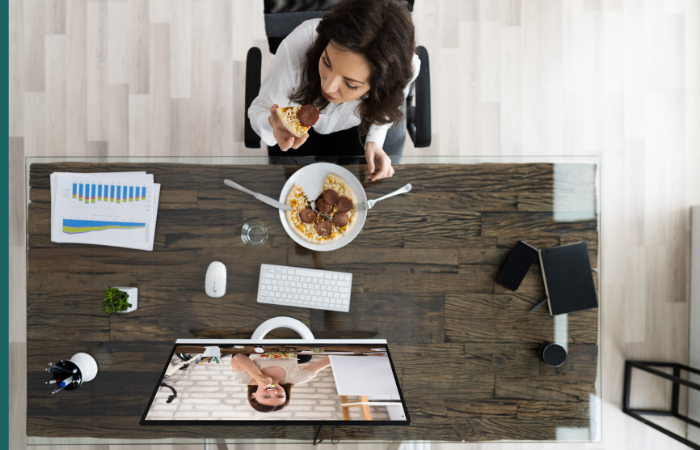Reinventing the business lunch in a post-Covid age
For centuries, work and lunch have been indelibly linked. In the Middle Ages, field workers up since dawn would pause at midday to gather for "beever" or "noonshine" (that’s bread and cheese to you and I).
The three-Martini lunch was the stuff of legends on 1970s Madison Avenue, promising what President Gerald Ford described as “an earful, a bellyful and a snootful at the same time”. The very existence of Oscar-winning animation Finding Nemo has a lunchtime brainstorm to thank: Pixar’s animators famously sketched out characters on restaurant napkins.
Even in a pre-Covid age, however, the time-honoured tradition of the business lunch was eroding. A 2018 study found Brits took just 22 minutes for their midday break, down a third in six years alone. Colleagues rarely gathered together, either: one in five chose to eat at their desks. Fast-forward to lockdown and the communal aspect of lunch has vanished entirely. Canteens and restaurants closed as we hunkered down en masse.
But all is not lost. With the vaccine effort offering fresh recovery hopes, UK businesses are raring for a return to office culture – and all the moments of connection that go with it. In a recent study of 180 companies by our team at Just Eat for Business, 69% expect to reopen their offices by next month, and 52% plan on offering their employees food perks to galvanise the team dynamic. After months of separation and anxiety, it’s possible that the ritual of a business lunch – long neglected in our frantic lives – may once again be prioritised. Here’s what that new reality could look like:
A hybrid structure
While the majority of UK businesses are planning on returning to the office, it will be a different place from before – most leaders envisage only 50% capacity at first, and over half believe their colleagues will continue to work from home for at least three days a week, even after offices reopen (that’s compared to just 1% who did the same pre-pandemic). With lockdown opening our eyes to the benefits of remote working, 89% businesses believe working from home at least two days a week is optimal. Most organisations will offer employees a choice either way, to better facilitate our new expectations of flexibility, as well as the logistics of distanced office arrangements.
What this means in cultural terms is that the new business lunch will have a good mix of in-office and remote participants – and it’s vital that the latter aren’t left out. Over 80% of businesses we surveyed think it’s “important” or “very important” to provide benefits that are equally accessible to their in-office and at-home employees. If the future of the office is a mix of both, inclusion will be key.
In order to accommodate this shift, we may well see a move back towards a more formalised lunch structure. Rather than employees simply drifting off alone or in pairs, companies may introduce a set time for lunch, allowing remote participants to gather with their in-office peers. It stands to reason that delivered-in meals will form part of this plan; and indeed, 75% of companies who plan on offering food perks to their teams will go with this option. Instead of heading out to a restaurant – a treat that remote employees are excluded from – individually-packaged and labelled meals can be sent contact-free to office and home workers at the same time, for everyone to enjoy together.
Community and connection
Using this approach, it’s possible to see that regular team lunches – amped up for special occasions such as birthdays, Halloween or Pancake Day – can be the social glue pulling together a diaspora of hybrid teams. Food-wise, the decadence of a takeaway will still be popular as a perk. But instead of sharing a pizza, everyone gets their own pork bao/ vegan burger/ posh fish ‘n’ clips, depending on preference.
Sharing lunch with a mix of on- and offline colleagues may seem like an odd concept at first, but in an age where we’re all chronically overworked and under-rested, it could be just the therapy we need. The pandemic has exposed us as the social animals we are: being around others gives us energy and spark. Team members, especially those who’ve been living alone, will be craving the return of office cohesion and conversations – but with the added flexibility of remote working in the mix.
A hybrid business lunch ensures that balance, and it also restores a vital element of community that has been lost these past few years; even before Covid. It echoes a model that is similar to our friends over the channel in France, over half of whom still sit down for a meal come 12.30pm.
With a spike in anxiety and loneliness over lockdown, the pandemic has reshifted our focus on wellbeing. The return of the business lunch, and all the morale that goes with it, is a great way to reset the balance, providing soup for the soul for employees – no matter where they happen to be.








